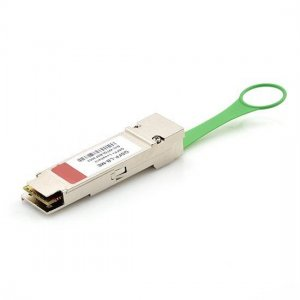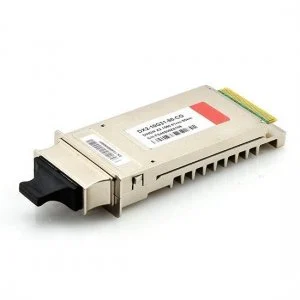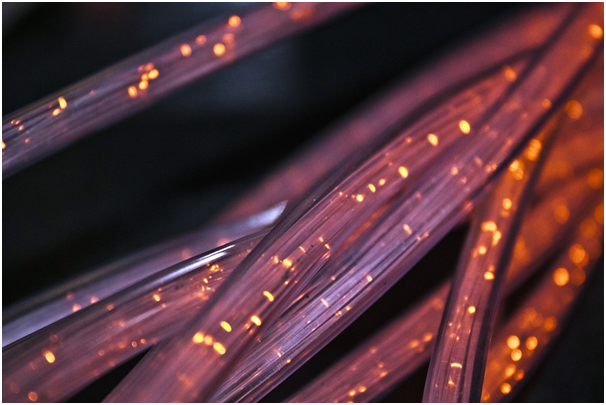
Fiber optic transceivers play a crucial role in converting electrical signals to optical signals and vice versa, enabling data transmission over fiber optic cables. Choosing the right transceivers is essential for optimizing network performance, ensuring compatibility, and maximizing cost-effectiveness.
Experts at Fibermart will walk you through the key factors to consider when selecting fiber optic transceivers to meet your network requirements.
Fiber Optic Transceivers
Fiber optic transceivers are modules that can transmit and receive data over fiber optic cables. They are commonly used in data centers, enterprise networks, telecommunications, and other high-bandwidth applications. Transceivers come in various form factors and types, each designed to meet specific needs in terms of distance, speed, and compatibility.
Recommended Read: How do Fiber optic transceivers work?
Common Types of Fiber Optic Transceivers
SFP (Small Form-factor Pluggable): Used for 1 Gbps Ethernet and Fibre Channel applications.
SFP+ (Enhanced Small Form-factor Pluggable): Supports data rates up to 10 Gbps.
QSFP (Quad Small Form-factor Pluggable): Designed for 40 Gbps Ethernet.
QSFP28: Supports data rates up to 100 Gbps.
CFP (C Form-factor Pluggable): Used for 100 Gbps Ethernet applications.
Key Factors to Consider
Data Rate Requirements
The first step in choosing the right transceiver is understanding your network’s data rate requirements. The data rate refers to the speed at which data is transmitted, measured in Gbps (gigabits per second).
1 Gbps: Suitable for small to medium-sized businesses or less demanding applications.
10 Gbps: Common in enterprise networks and data centers for high-speed connectivity.
40 Gbps and 100 Gbps: Ideal for large-scale data centers and applications requiring ultra-high-speed connections.
Ensure that the transceiver you select matches the data rate requirements of your network equipment.
Explore More: How Will Fiber Optic Transceivers Evolve for Future Data Centers
Distance and Reach
The distance over which data needs to be transmitted is another crucial factor. Fiber optic transceivers are designed to support various transmission distances, from short-range to long-range.
Short-Range (SR): Typically used for distances up to 300 meters, ideal for intra-building connections.
Long-Range (LR): Suitable for distances up to 10 kilometers, used for inter-building connections.
Extended Range (ER) and Very Long Range (ZR): Can support distances up to 40 kilometers or more, used for metropolitan area networks (MAN) and wide area networks (WAN).
Choose a transceiver that can handle the required transmission distance without signal degradation.

Fiber Type
There are two main types of fiber optic cables: single-mode and multi-mode. The type of fiber you use will determine the appropriate transceiver.
Single-Mode Fiber (SMF): Used for long-distance transmission. Single-mode transceivers are typically more expensive but can handle higher bandwidth over longer distances.
Multi-Mode Fiber (MMF): Used for shorter distances due to higher attenuation and dispersion. Multi-mode transceivers are generally more cost-effective for shorter-reach applications.
Ensure compatibility between the transceiver and the type of fiber optic cable in your network.
Compatibility with Network Equipment
Compatibility with existing network equipment is essential. Most transceivers are designed to be hot-swappable and fit into various network devices such as switches, routers, and servers. However, ensure that the transceiver you choose is compatible with your specific network hardware.
Brand Compatibility: Some manufacturers lock their equipment to work only with their transceivers. Verify compatibility with your equipment manufacturer.
Standards Compliance: Look for transceivers that comply with industry standards like IEEE and MSA (Multi-Source Agreement) to ensure interoperability.
Power Budget
The power budget is the amount of power available to ensure proper signal transmission over a given distance. It is the difference between the transmitter output power and the receiver sensitivity.
Ensure Adequate Power Budget: The power budget must be sufficient to compensate for any losses due to fiber attenuation, connector losses, and splices.
Environmental Conditions
Consider the environmental conditions where the transceivers will be deployed. Factors such as temperature, humidity, and exposure to elements can impact transceiver performance. If the transceivers will be used in harsh environments, choose industrial-grade models designed to withstand extreme conditions.
Future Scalability
Plan for future growth by selecting transceivers that can scale with your network needs. This includes considering higher data rates, longer distances, and compatibility with newer technologies. Choose transceivers that allow for easy upgrades and scalability to accommodate future network expansion.
Cost Considerations
While cost should not be the sole determining factor, it is important to balance performance and budget. Consider the initial cost of the transceivers and the long-term costs associated with maintenance, power consumption, and potential upgrades.
Making the Final Decision
To make an informed decision, it’s helpful to follow a structured approach:
Assess Your Network Needs: Analyze your current network infrastructure and future requirements. Identify key parameters such as data rate, distance, fiber type, and environmental conditions.
Research and Compare: Research different transceiver options from reputable manufacturers. Compare specifications, compatibility, and costs.
Test and Validate: Before full deployment, test the chosen transceivers in a controlled environment to ensure they meet your performance and compatibility requirements.

Consult Experts: If needed, consult with network specialists at Fibermart to gain insights and recommendations based on your specific use case. By carefully considering factors like speed, fiber type, compatibility, and environmental conditions, you can ensure optimal data transmission and avoid potential issues.
We offer a comprehensive range of fiber optic products and expert support to help you navigate the selection process and choose the perfect solution for your specific needs. Don’t hesitate to contact our specialists for personalized guidance and ensure your network operates at peak efficiency. We’re offering free shipping on orders above $200!

